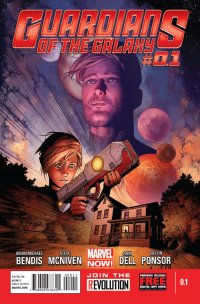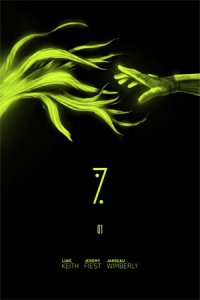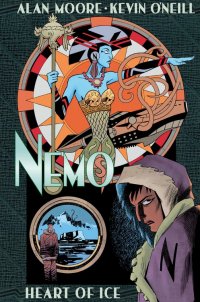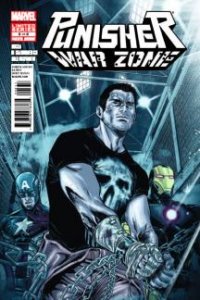GUARDIANS OF THE GALAXY #0.1 ($3.99, Marvel Comics)
By Devon Sanders (@devonsanders)
This review will be sort of succinct.
I liked this comic. It was good. It didn’t change me. It entertained me. This is simply one of those comics where going in, you know what you’re getting.
If you have access to the info that Marvel forever “accidentally” leaks, you know that Guardians Of The Galaxy is soon being made into a major motion picture. You know that they want you in on this.
Guardians Of The Galaxy #0.1 is the story about a spacemen, the space mercenaries he secretly loves, and the aliens they’ll be shooting lasers at. Writer Brain Michael Bendis gives you all of that and the lead character, Peter Quill/Star-Lord’s motivation pretty danged well. You walk away knowing who the character is and why fellow space aliens and ummm…
(SPOILER ALERT)….
(Seriously. SPOILER ALERT. Well, if you don’t have internet access or don’t pay attention to spoilers)
Tony Stark. In space… ready to beat back a Badoon invasion.
To paraphrase Bendis; this comic is a thing. This is comic screaming for you to read it. It wants you to be ready. It’s written by Marvel’s go-to-guy, Brian Michael Bendis. It has the subject of the Iron Man 3 movie in place. It’s beautifully drawn by Steve McNiven, the artist behind one of Marvel’s best known miniseries, Civil War, so there’s that. Guardians Of The Galaxy #0.1 with its top notch talent may not be the book where you’d expect to find these considerable talents but that’s the point, really.
Marvel wants you on board.
Marvel wants your eyes. They want you to know the material. They want to fulfill the promise that you’ll fall in love with the weirdness that comes from having an Avenger team with a laser-shootin’ space raccoon.
So, that said, ball’s in your court.
Rating: 




Out of a Possible 5 Stars
 7% #1 (Red 5, $1.99 – digital only)
7% #1 (Red 5, $1.99 – digital only)
by Graig Kent
In cinema, you have your big, epic, “final frontier”/”galaxy far far away” science fiction, the blockbusters that manage to penetrate the public consciousness, and you also have your runners-up, the ones that put the budget and the marketing into it, but for whatever reason, just don’t gain as much, if any traction. Perhaps it’s a result of trying to make SF be too many things for too many people, or they don’t understand their own conceits, or they’re mired in convoluted and meaningless babble, or sometimes it’s because the vision involved is so unique to the creator that it’s less a genre exercise than a cinematic one. But beyond those, are the also-rans, the films of David Twohy or Scott Stewart, the perpetual B-listers who plug away at genre material for a dedicated audience of genre consumers, creating material that rarely transcends its trappings, but seeks to entertain within them.
In comics, superheroes and licensed properties are the the main draw. They’re what people know and what people expect, they draw the biggest talent because they have the most budget. Those major talents producing creator-owned, genre-laced materials are the runners-up, though they’re capable of penetrating through to a larger readership, they’re at a disadvantage from the start. The also-rans are the guys within the small presses, plugging away at their own projects for a small audience, working their own iteration of genre material. Rarely do these stand out on the crowded shelves (or busy online catalog) to rise to the A-level.
7% is a six-issue, digital-first production from creator Luke Keith, writer Jeremy Fiest, and illustrator Jarreau Wimberly, published by Red 5, and it’s an also-ran. Let’s be straight here, we’re not talking Asylum Studios or Syfy level storytelling here (you know, those intentionally crappy productions trading in camp and kitsch) but rather some genuinely talented individuals who have produced a fairly entertaining story that’s just not going to rise above to join a Saga or Chew in the upper-echelon of creator-owned books. But there’s nothing wrong with that, truly. If all it takes is a strong conceit and applies it to an action-oriented tale set in a vaguely-constructed distant dystopian future.
It’s 3499, and Earth is pretty much dead, except for one expansive subterranian city acting as separatist headquarters from the tyrannical Union. The Union is keen to brainwash and control its subjects, and separatists naturally are keen to keep their minds free. In play is the Maguffin, the Psion Machine, developed centuries prior as a means to unlocking humanity’s full mental potential. It remained hidden for generations, only recently discovered by the separatists. Now they’re trying to figure out why the symbiotic creature the machine creates to unlock the human mind is resistant to bonding with their volunteer soldiers, and when they’re force-grafted on, they only unlock 93%, driving the subjects mad in the process (so the titular 7% is the threshold they just can’t surpass). Meanwhile, the Union has heard the rumours that the Psion Machine is in separatist possession and they’re sending an assault squad as a distraction while one specific soldier is set to infiltrate the city simply to confirm the machine’s existence. I’m sure you can see where this is going.
The characters and scenery and lingo may be its own but this is a fairly boilerplate story, so while there’s much entertainment, there’s not a lot of surprises. This is rather straight, mindless entertainment. Fiest delivers a solid script, with fluent dialogue and narration that’s never obtrusive, but his characters lack definition. It’s apparent that 7% is story and idea focussed, but it’s possible there may be a more character-centric shift given the expected set-up for the remainder of the series (though, who know, there may still be some surprises in store). The art from Wimberly is solid stuff, with a particularly glossy use of digital coloring processes to give the book a natural sense of tone and light. Wimberly works perhaps a little too hard to get a realistic impression from his figures through color, as if he’s trying to digitally animate the pages, and it betrays the linework underneath, which is more stylized than it lets on. Wimberly has a strong sense of space and composition and he shouldn’t overcompensate so much with colors that virtually negate the necessity of linework at all. That cover image, however, is absolutely stunning, and that logo is “why hasn’t that been done before” ingenious.
7% has a very cinematic feel to it. This first issue is very much paced like the opening 20 minutes of a feature. I can see this casting Colin Ferrell and Thomas Jane, shooting in Croatia, financed by a consortium of European private investors to the tune of 65 million and making it all back and more in international and on-demand sales. It’s not going to inspire fanatical devotion, but it will certainly pass the time just fine. An also-ran, but one of the better ones for a lazy Sunday afternoon.
Rating: 




Out of a Possible 5 Stars
Nemo: Heart of Ice ($4.99 Digital/$14.99 Hardcover, Top Shelf)
by D.S. Randlett (@dsrandlett)
In terms of its influence, I find that Alan Moore and Kevin O’Neill’s work on The League of Extraordinary Gentlemen is extremely understated. As far as I can tell, if it did not launch the “steampunk” aesthetic of a genre that straddles Science Fiction and High Fantasy that we haven’t managed to yet name, it at the very least brought it to the forefront, along with a rollicking, winking tone that eschews overt seriousness and instead embraces the absurd. I must confess that I have not yet read Century, but all of the efforts that Moore and O’Neill have put forth in this series, Nemo included, have always been a step ahead of other entries into this particular mash up subgenre. Even in League’s “off” entries (that is to say, when it’s merely good), Moore’s writing and intelligence shine as he charts the progression of the English-speaking mind throughout the twentieth century by means of our public domain pop culture castaways. League always has something on its mind.
It is also just more fun than everything else, and Nemo is another able example of this. While Lovecraft, always a major influence on Moore, casts a rather large shadow over this story, it is first and foremost a League flavored romp. Moore and O’Neill set up and execute a simple enough (at first glance) chase story that manages to feel surprising simply by dint of both men’s considerable command of the medium. Comics rarely move like this. The narrative and the images both have a sense of propulsion. While many of Moore’s interests lay in the academic and the thematic, he never loses touch with his ability to tell a thrilling yarn. This story just moves, never losing focus of the chase at its center despite some pretty experimental digressions.
It all starts when Janni Dakar, daughter of the original Captain Nemo, steals a load of goods from Queen Ayesha of Kor and Charles Foster Kane. Kane enlists the aid of a group of American “science adventurers,” two of whom are living under the shadows of their more famous fathers, and the other a young, despicable genius. They are to chase down the young Nemo, who is headed for the South Pole in an effort to overcome the legacy of her own father. Once the story reaches the South Pole, it is off to the races with vehicular chases and manslaughter aplenty, and a maddening hike through space and time to the ruins of a dead civilization once run by eldritch horrors where something may yet live.
It’s easy to write this book off as an entertaining and well constructed yarn, but I think that there’s more there. So much that I don’t feel that I’ve fully cracked this book, or will be able to for quite some time. It has nothing to do with Moore and O’Neill’s references to past fictions. As ever, the pair are extraordinarily fair in that regard. The cards are all on the table here. At the moment, Nemo seems to be speaking mainly to two things: the paradoxical human need to both relive and outdo the past (Moore calling his own creative impulses to the floor, perhaps?) and the inadequacy of the scientific mind in the face of primal human needs and wants. Despite the story’s breezy pace, a second reading has, at the very least, proven to me that these themes are not being dealt with in a cursory way. Rather, it is up to the reader here to resist the pull of the narrative’s momentum and suss out the questions and insights that Moore and O’Neill are bringing up.
Alan Moore often gets lumped in with Frank Miller as someone who doesn’t have the same spark as he used to. While it may be true that Moore hasn’t written something on the level of Watchmen or Promethea for some time, it is also true that he still remains one of comics’ essential minds. Nemo may not be earth shattering, but it is a work of astonishing pedigree, quality, and depth. It’s a book that I look forward to revisiting in the coming weeks.
Rating: 




Out of a Possible 5 Stars
Punisher: War Zone #5 of 5 (Marvel $3.99)
By Jeb D.
The surprise isn’t that Greg Rucka’s time with the Punisher was so short, or even that he got the chance to do the book at all; the surprise, really, is that Marvel saw fit to let one of today’s top writers wrap up one of the best Punisher series they have ever offered in his own way, and to do so with what is, at heart, a fairly straightforward lament on the reasons it couldn’t survive. In other words, if you want to know how Rucka feels about the current state of corporate superhero comics, you don’t need to follow Bleeding Cool or Twitter: you just have to read this miniseries.
Had Rucka taken on The Punisher a couple of years earlier, he might have left behind something of epic scale, to stand beside Garth Ennis’ defining work on the character. But timing is everything (or can be, anyway), and as Marvel was being acquired by Disney, and ramping up its movie-verse, there was no way that a recognizable trade mark (or “character,” if we’re being old-fashioned about it) like The Punisher was going to be allowed to stand off to the side and avoid the spandex mayhem. Indeed, by the time Rucka had returned to Marvel to take charge of Frank Castle, the Punisher had already been dismembered and reassembled by Rick Remender, and was about to head off into outer space. But with the end of the MAX version of The Punisher, there was at least some hope that Rucka might be allowed to keep the street-level version of Castle going.
And he did, for a while. His story of Frank acquiring a female protégé played to Rucka’s strengths (see Queen and Country, or the supporting cast of his Atticus Kodiak novels), and like Brubaker and Bendis, he was able to craft adult, tough-minded modern crime storytelling without needing the sharp edges and coarse language available in a MAX or Vertigo book. How he might have built on that, we’ll never know, but he signs off his Frank Castle era with a five-issue meta-commentary on the ultimate futility of trying to keep a corporate comic book character grounded in the streets, when the demands of commerce says that he needs to fly.
For what it’s worth, this concluding issue perfectly hits the marks that Rucka has set up. Right from the start, this “War” was never intended to emulate Punisher Kills the Marvel Universe, or the various “The End” titles. Though Rucka began by letting the reader believe that this would be some kind of battle to the death, he then put himself in Frank’s place by manipulating the story, and the reader, into seeing that, contrary to the Disney-fied thought process, the Marvel universe is a big enough place for both over-the-top costumed heroics, and a dash of real-world storytelling: early on, The Punisher triumphs over Black Widow not by knocking her out, but by forcing her to solve a human problem that transcended just another superhero punchup. His encounters with the other Avengers have been similar: doses of reason and common sense, but underlined with things like hand grenades and weaponized Spidey webbing.
And in this final issue, Rucka pulls off the wonderful trick of showing us that his tough, unsparing version of The Punisher can, in fact, also be a terrific foil for the current movie-inspired Avengers, as he manages to neutralize both Thor and Iron Man with a level of wit and determination that never feels forced: his scheme is well thought-out, and Rucka makes it work by having Frank’s plans actually turn out to have been far simpler than they appear, working the same magician-like misdirection on the reader that he does on the Avengers (I also like his tip of the hat to Richard Stark’s Parker, by setting the climactic showdown in an abandoned amusement park, with its further meta-commentary on the iron hand of Disney). Rucka also demonstrates such a deft touch with the current Downey-inspired Tony Stark as to underline his contention that The Punisher doesn’t need to be a cartoon to coexist with the movie-inspired versions of these characters.
And Rucka provides the perfect conclusion: if what Marvel wants is a safe, sanitized, closed-in Castle, who’s at the mercy of the company’s costumed cutups, that’s what he’ll give them. The “passing the torch” epilogue, which is the part of this series that feels the most obvious, actually opens up some interesting possibilities for the future, if Marvel is willing to let someone like Jason Aaron have a crack at the further adventures of Rachel Cole-Alves.
In some ways, artist Carmine Di Giandomenico was a good choice for this series, despite some rather cool critical reception to his work here: he’s not as comfortable with the costumed heroics as he is Frank’s scuzzy world, so that we seem to be looking at the Avengers through a leaner, more jaundiced, eye, than usual. And he proves himself up to the task in making Rucka’s apocalyptic battle as exciting, and often darkly funny, as the script.
I’m a few issues behind on the current Thunderbolts incarnation, so I have no idea if any attempt has been made to reconcile that book with the events of this series, but that’s OK. There’s no such thing has having the “last word” on a corporate character like The Punisher, but anyone who wants to believe that Frank Castle’s story ends where Rucka leaves it, will feel that a (somewhat cruel) form of justice has been done… and let’s give a (somewhat grudging) tip of the hat to Marvel for letting him do it his way.
Rating: 




Out of a Possible 5 Stars